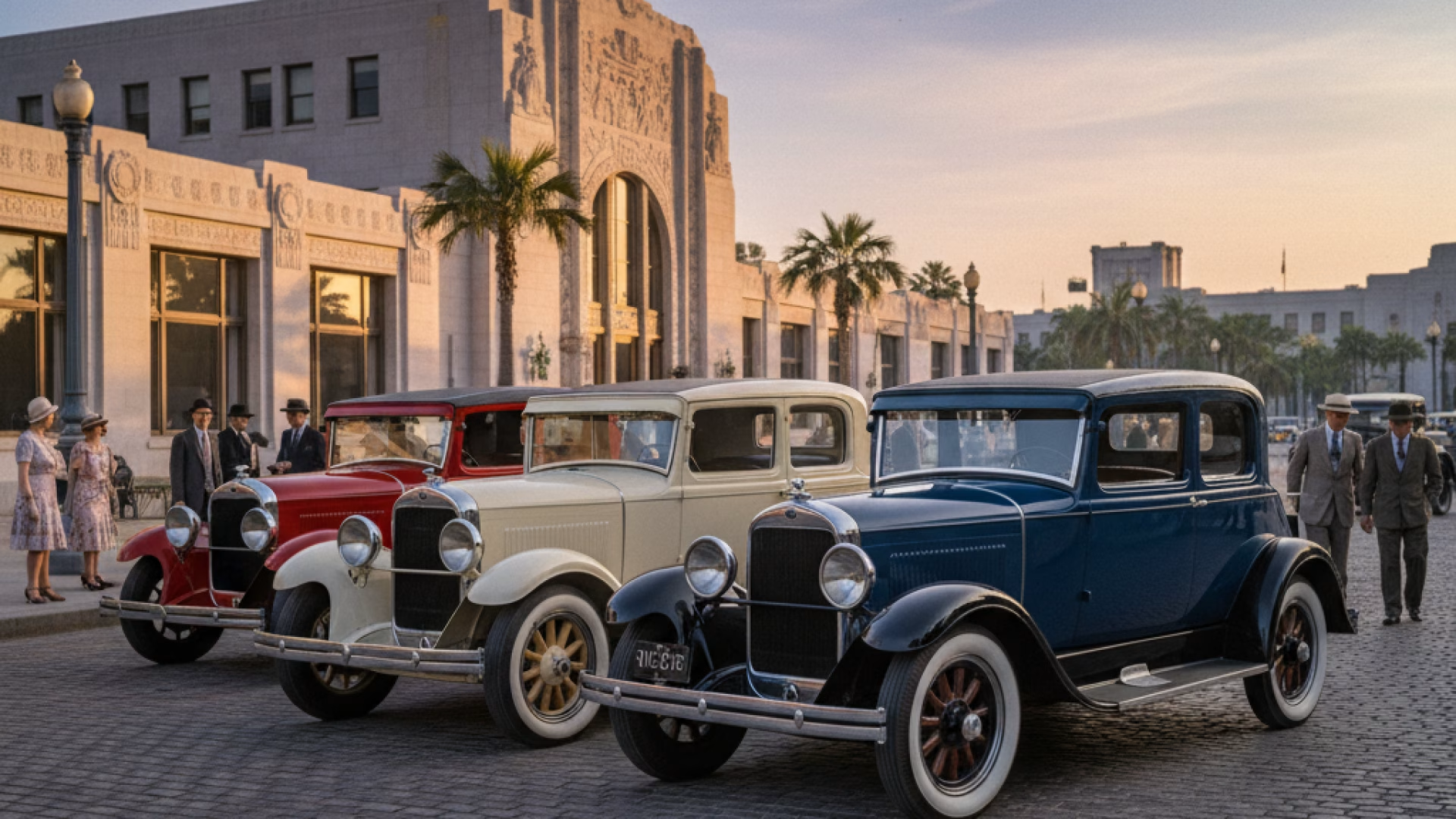Plymouth: A Legacy of Value, Muscle, and a Rebellious Spirit
Plymouth was a brand that lived a glorious double life. For much of its history, it was the dependable, value-focused workhorse of the Chrysler Corporation, building sensible cars for the everyday American family. But in the heat of the 1960s, Plymouth unleashed its wild side, becoming a dominant and rebellious force in the golden age of the muscle car. The brand became famous for its potent HEMI® engines, its "Looney Tunes" marketing, and some of the most iconic and outrageous performance cars ever to hit the street. Though the brand was discontinued in 2001, its legacy as a creator of legendary Mopar muscle cars remains a powerful and celebrated chapter in automotive history.
The Genesis: Chrysler's Answer to Ford and Chevy
The Plymouth brand was introduced by Walter P. Chrysler in 1928. Headquartered in Auburn Hills, Michigan, USA, Plymouth was created with a singular mission: to compete directly with the low-priced, high-volume offerings from Ford and Chevrolet. The first Plymouth, the Model Q, was a success, and for decades, the brand established itself as one of the best-selling car brands in America, known for its solid engineering, advanced features (like hydraulic brakes), and exceptional value.
Core Philosophy: From Sensible Value to "The Plymouth Rapid Transit System"
While its initial philosophy was rooted in practicality, Plymouth's identity was forever changed in the muscle car era. The brand adopted a fun, youthful, and slightly rebellious attitude. Its performance lineup was marketed as "The Plymouth Rapid Transit System," a clever campaign that positioned its cars as a family of specialized tools for going fast. The philosophy was simple: offer the biggest, most powerful engines in its lightest, no-frills bodies to create the ultimate street-legal drag racers. This was performance for the people, often at a lower price than its competitors.
Defining Moments and Iconic Achievements
Plymouth's history is a highlight reel of game-changing cars and legendary performance.
- The Barracuda and the Pony Car: While the Ford Mustang gets the credit, the Plymouth Barracuda was actually released two weeks earlier in 1964, making it a true pioneer of the "pony car" segment with its distinctive, massive fastback rear window.
- The HEMI® 'Cuda: The 1970-71 Plymouth Barracuda, particularly when equipped with the legendary 426 HEMI V8, is one of the most beautiful and valuable muscle cars in the world. The 'Cuda became an icon of Mopar power.
- The Road Runner and "Beep Beep!": The launch of the Road Runner in 1968 was a stroke of genius. It was a stripped-down, budget muscle car based on the Belvedere, licensed with the Warner Bros. Road Runner cartoon character. Its "beep beep" horn and focus on pure, affordable performance made it a massive success with younger buyers.
- The "Winged Warriors": The Superbird: To dominate NASCAR, Plymouth created one of the most outrageous cars ever seen: the 1970 Road Runner Superbird. With its massive, towering rear wing and aerodynamic nose cone, the Superbird was a purpose-built racing machine for the street that has become a legend.
- The Voyager and the Minivan: Alongside its sibling, the Dodge Caravan, the Plymouth Voyager invented the modern minivan segment in 1984, revolutionizing family transportation.
The End of an Era and Plymouth's Lasting Legacy
As the market changed and Chrysler streamlined its brand portfolio, the space for Plymouth began to shrink. The brand's final, unique model was the retro-styled Prowler. In 1999, the decision was made to phase out the Plymouth brand, with the final car, a Neon, rolling off the assembly line in 2001.
Why Plymouth Still Matters
Despite its absence, Plymouth's legacy is more powerful than ever in the hearts of Mopar enthusiasts. The brand represents a golden era of American performance, a time of rebellious creativity and a focus on fun. Classic Barracudas, Road Runners, and Superbirds are now some of the most valuable and sought-after collector cars in the world. For those seeking a classic American muscle car with a unique story and a ton of attitude, a used Plymouth is a direct link to a bygone but celebrated era of high-octane history.
